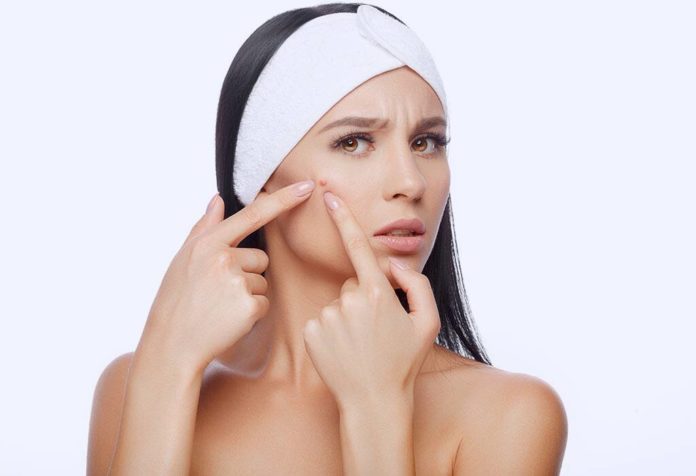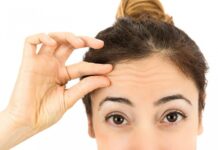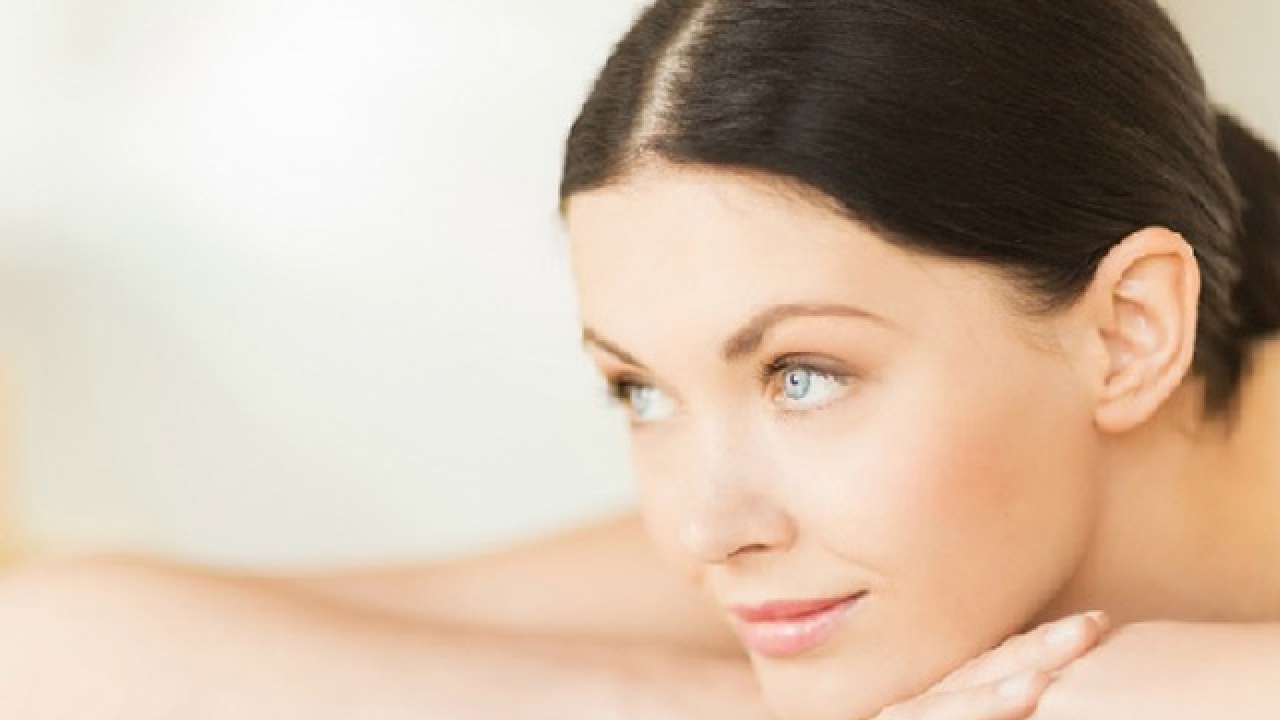Acne can be identified as small red inflammatory structures on one’s face, neck, shoulders, back, chest, and upper arms. Acne, in its different stages, can be considered as a mild problem to a chronic problem depending on the severity. It is one of the most common skin conditions as every human once in a lifetime does experience acne on their body in the forms of whiteheads, blackheads, cysts, pimples, or nodules. Though people of all age groups can experience the problem of acne yet, mostly teenagers tend to have them the most. When children hit puberty, it occurs as a common skin condition; hence, it cannot be categorized as a dangerous disease yet, can leave acne scars behind.
Acne is stimulated by male hormones produced by the adrenal glands and is caused mainly due to the clogging of the sebaceous glands. Acne can occur to both men and women mostly between the ages of 12-30 and is considered as a common skin condition hence, ignored. Acne can develop before and after the aforementioned age group due to factors like climate changes, living in hot and humid regions, usage of oil-based skin products, stress, menstrual cycle, genetic disorder, anxiety, and also due to picking or touching of former pimples. As we have mentioned earlier, people tend to ignore the occurrence of acne, but it might require special care and medical treatment depending on the frequency of its occurrence and severity. If it is a persistent situation then, you should definitely try preventive measures, and if the condition still persists, you might want to take treatments for acne.
Causes of acne

Acne occurs when there is clogging of a follicle, and pores are the opening for follicles on your skin, which are made up of hair and oil glands. There are basically four causes for the occurrence of acne namely –
- clogged pores
- bacteria
- excess oil production
- imbalance of overactive androgens
The appearance of whiteheads or white bumps can be due to the result of plug closed pores. These whiteheads, when exposed to the air, become black and might look like a dirt-filled pore. These pores are actually filled with bacteria and oil which, when comes in contact with air, turns brown or darker in the shade.
The sweat glands and sebaceous glands, when blocked with oil, dead skin cells, and bacteria, create acne.
When such inflammation and infection take place deep under the skin, they tend to take the shape of cystic acne, which could also cause pain.
Symptoms of acne
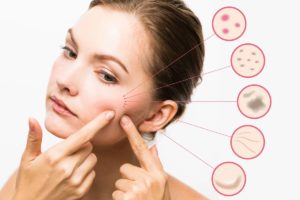
Acne is symptoms of your hair follicles being clogged with dirt, oil, skin products, dead skin cells, etc. Under such conditions, the clogged pores experience a collection of oil beneath the skin and lack of oxygen; hence, the uprise of blister-like formations and inflammatory small red bumps known as acne. Acne is not at all difficult to spot, but still, there are symptoms of the varied types of acne. Also, it is essential to know whether what you think is acne is truly one or not? There are some look-alikes of acne. Hence, it is better to know the symptoms and types of acne so that you treat it in an appropriate manner. The symptoms of acne differ according to its severity and persistence on your skin. Symptoms of acne are as follows –
- Whiteheads – whiteheads are one of the most commonly occurring acne types. These appear beneath the skin and are caused due to clogged pores. If you notice carefully, you can identify them as white in color and are also known as comedones.
- Blackheads – another most commonly occurring acne type. These can be clearly seen on your skin because of the black colored heads, which are a result of reaction with oxygen in the air. Blackheads can be mostly seen on nose tips, and they are also known as comedones.
- Papules – papules are basically caused due to inflammation in the hair follicles or due to infection in the pores. They can be recognized as small, red, and raised bumps on the surface of the skin. Their sizes vary from 2-5mm in diameter.
- Pustules – pustules can be identified as papules but with pus-filled in the tips. They are also red-colored pimples on the surface of the skin. Just like papules, the size of pustules also varies from 2-5mm in diameter.
- Nodules – nodules can be identified as hard lumps on the underside of the skin. Nodules can be painful in nature.
- Cysts – just like nodules, these are also recognized as painful, solid lumps on the underside of the skin, with the only difference being that they are filled with pus.
Types of acne
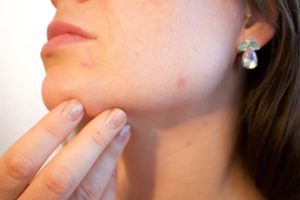
Acne can not only be classified by severity but also by its various types. Types of acne are as follows –
- Acne Vulgaris– if there is a simple new break out on your skin, then it is definitely acne vulgaris. It is the most basic type of acne and can occur on the face, shoulders, back, and even buttocks. They start breaking off as mild acne but can quickly grow into severe forms; hence, it is suggested by professionals to seek treatment in the initial stage.
- Comedonal acne – this one is a subset of the acne vulgaris and can be recognized as small bumps in the form of blackheads and milia. They are not inflammatory in nature, can occur anywhere on the face or entire body. They could start off as mild acne but can take severe form quickly.
- Cystic acne – this one is considered as the most severe and painful form of acne vulgaris. It occurs in the form of inflammatory and large blemishes. These ones take place deep inside the skin, take weeks to cure, and cause damage to the skin giving birth to acne scars.
- Nodular acne – this one can be recognized as large, solid nodule formations beneath the skin and is also one of the severe forms of acne vulgaris. Nodular acne can occur to both men and women at any age, and looking at the severity of the blemish, it is always suggested to take medical treatment.
- Acne rosacea – mostly women suffer from acne rosacea, but men also suffer from it but in a severe form, though. This acne tends to occur to people above the age of 30, and it can end you up in a severe condition with a bulbous nose and eye problems. The signs of acne rosacea are a red flushed face and appearance of veins on one’s nose and cheeks. Exposure to sunlight, drinking hot beverages, stress, eating spicy food items can act as a catalyst to this acne form.
Treatment for acne

Sometimes, you might feel that acne is a common skin condition and does not require any medical treatment. But treating acne is really important because you never know when simple acne can take a severe form. Some of the self-care techniques for acne are –
- Wash and clean your skin regularly to keep it oil free and dirt free.
- Never pick or squeeze your pimple as that can spread infection.
- Do not wear tight headbands and hats still try to keep your hair away from the face as much as possible.
- Use only non-comedogenic skin products and makeup which do not clog pores.
In severe conditions, you might have to seek medical support –
- Benzoyl Peroxide is mostly present in all acne-treating gels. It prevents the spread of acne-causing bacteria, kills it, dries the acne, and prevents the occurrence of new ones.
- You could also use mild soaps, face washes, or acne washes, which come with Salicylic acid, which prevents clogging of your hair follicles and keeps it clean.
- Severe nodular acne cases are often tested and cured by Accutane, also popularly known as Isotretinoin, which is a Vitamin-A based medication. It is to be strictly used only under professional medical supervision as it can cause side effects and is considered as a last resort.
- Women with hormonal imbalances also tend to have acne, which can be cured through the intake of oral contraceptives. These help in controlling the disturbed acne-causing hormones from producing excess oil hence, curing acne.

